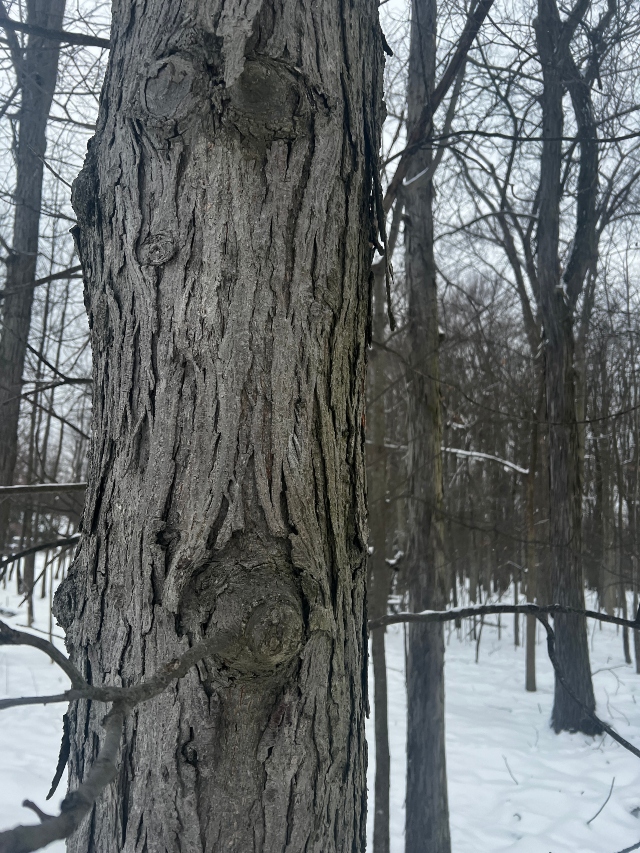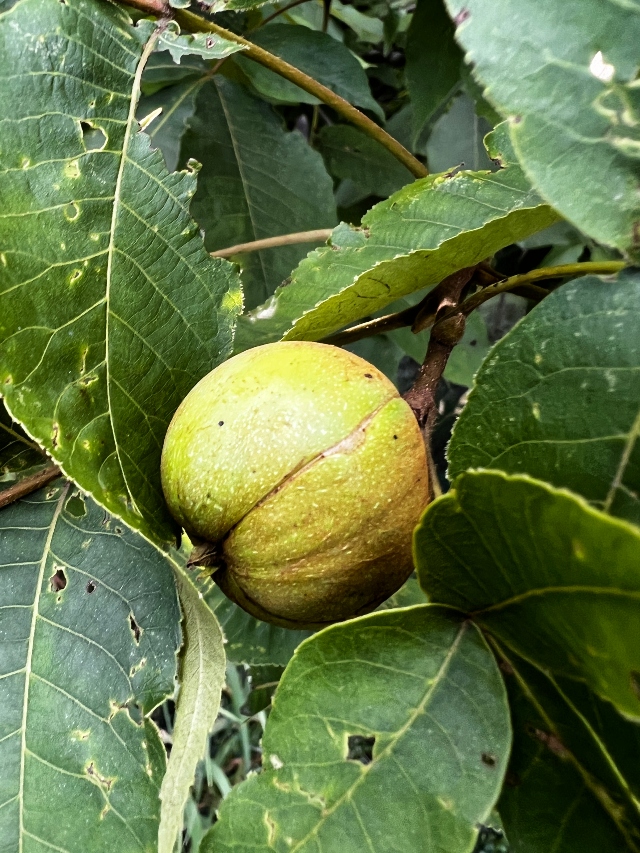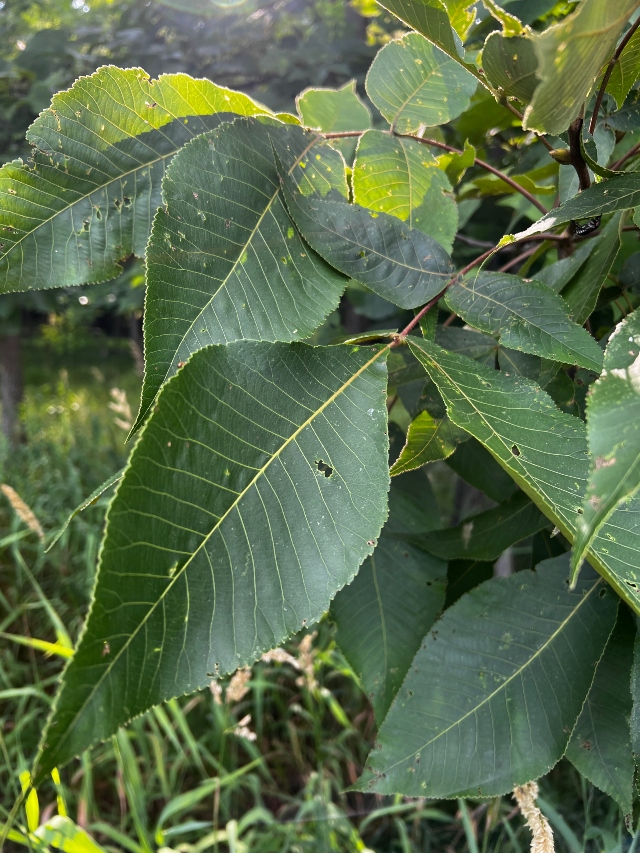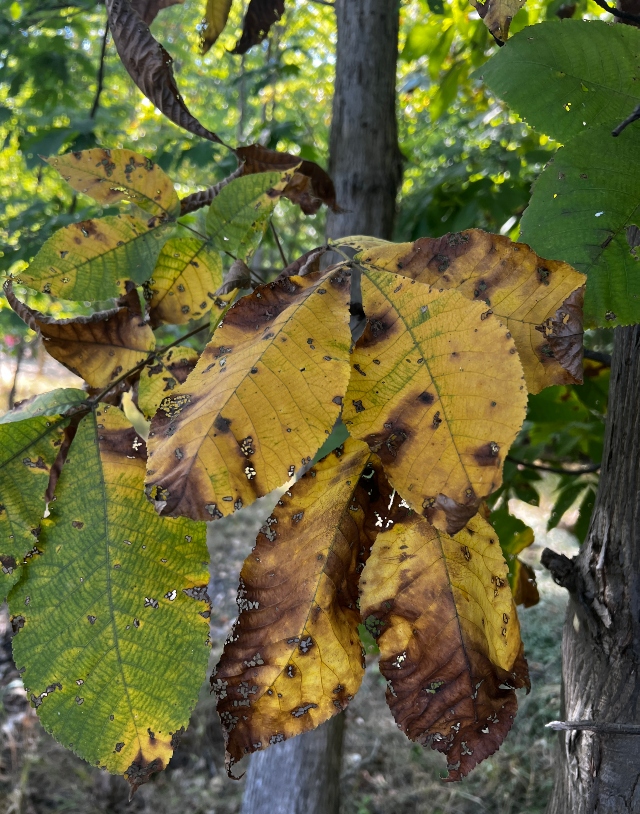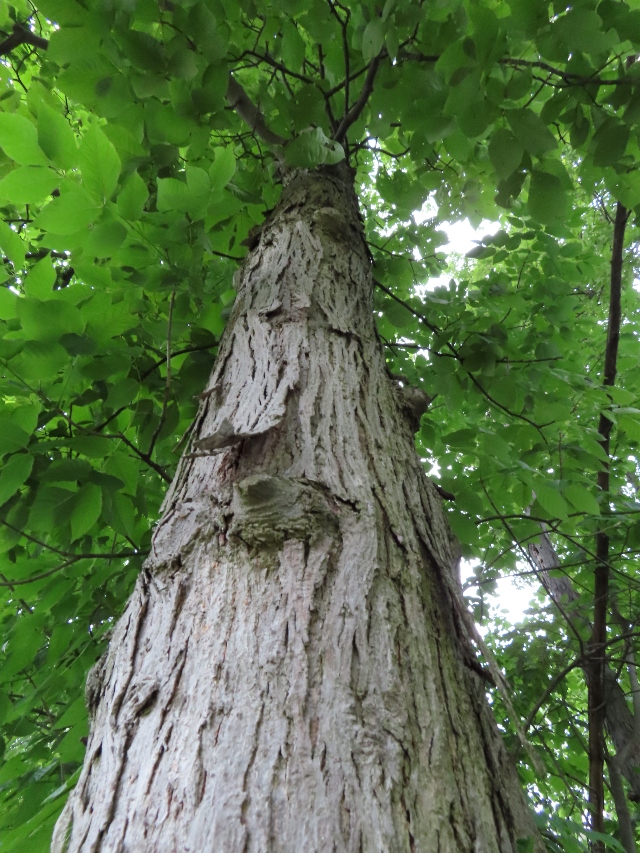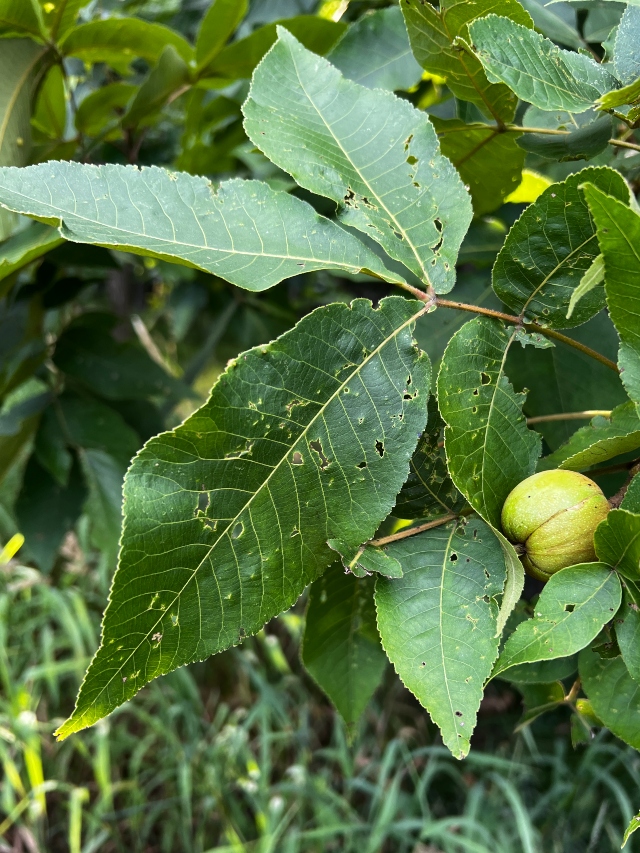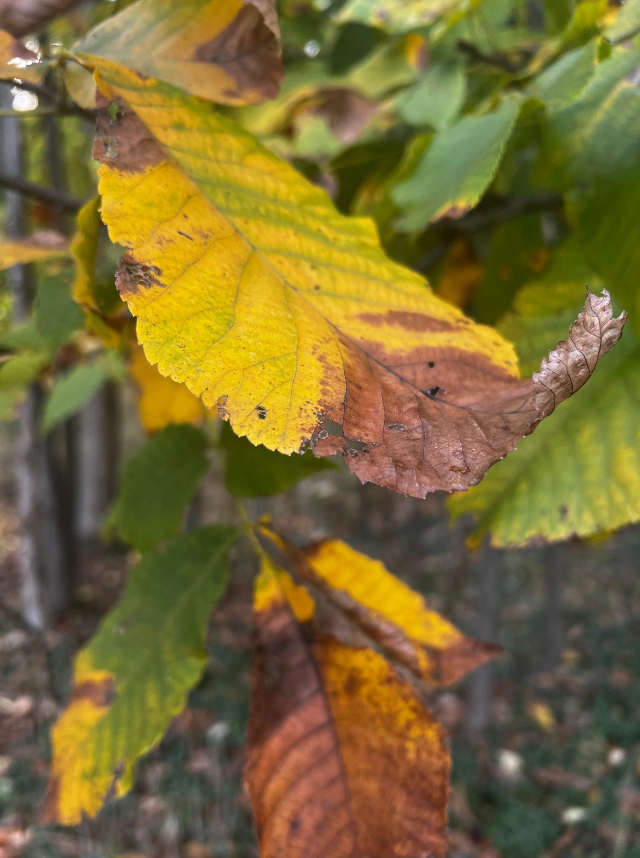This is a common, but not abundant species of hickory in the Eastern United States and Canada. The range of this tree covers nearly all of the eastern United States. This particular example lives on my street and I pass it throughout the seasons when I walk my dog.
Pignut Hickory’s pear-shaped nut ripens in September and October, has a sweet maple like smell, and is an important part of the diet of many wild animals. The nuts are quite bitter, and though popular with many mammals, they are not consumed by man.
The nuts represent an estimated 10 to 25 percent of the diet of several species of squirrel. The nuts and flowers are eaten by the Wild Turkey and several species of songbirds. And the nuts and bark are eaten by Black Bears, Foxes, Cottontail Rabbits, and Raccoons.
Pignut Hickory’s bark is gray-brown and smooth when young, developing scaly ridges that are interwoven in a diamond-like pattern with age.
This tree’s wood is heavy, hard, strong, tough, and elastic. It is used for a variety of products. Early uses included broom handles, skis, wagon wheels, and automobile parts. In modern times, sporting goods, agricultural implements, and tool handles are often made from the wood of Pignut Hickory.
Its deciduous, 8- to 12-inch long leaves create a coarse, oval canopy, and the strong but irregularly spaced branches resist breakage in storms, making it useful as a shade tree. Its leaves turn yellow in the Fall.
Other common names for this tree are Pignut, Sweet Pignut, Coast Pignut Hickory, Smoothbark Hickory, Swamp Hickory, and Broom Hickory.

